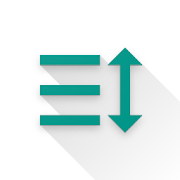Some of them you may already know, but we are sure you can find a hidden gem among these!
Some of them you may already know, but we are sure you can find a hidden gem among these!
As an Android developer, you have used a lot of libraries in your applications. With libraries, we leverage the efforts of other developers to perform some actions faster, more effectively, and with lesser boilerplate codes. Aside from all of that, libraries are there to help us speed up the development.
This article will cover various libraries from the different categories, including the most common ones we use in Android Application development.
This library allows you to show a nice animated (or static) placeholder of a view when you load something. It can be used with RecyclerView, and it’s easy to implement.
GitHub: https://github.com/samlss/Broccoli
But it offers a lot of other benefits such as:
- Automatic scheduling of network requests.
- Multiple concurrent network connections.
- Support for request prioritization.
- Strong ordering makes it easy to correctly populate your UI with data fetched asynchronously from the network.
- And much more...
Android Official: https://developer.android.com/training/volley
GitHub: https://github.com/square/retrofit
This library adds a fast scroll for your RecyclerView and offers more customization for the track, thumb, popup, animation, and scrolling. Implementation is pretty clean too.
GitHub: https://github.com/zhanghai/AndroidFastScroll
Glide provides animated GIF support while handling image loading and caching and helps in fetching, decoding, and displaying video calls, images, and these GIFs, which is a wide amount of features.
This library primarily aims to make the scrolling process for any list of images as smooth as possible. It is also effective in case you need to fetch, resize, or even display a remote image.
GitHub: https://github.com/bumptech/glide
Lottie is one of the Android development libraries that parses Adobe After Effects animations exported as JSON with Bodymovin and renders them natively on mobile. With Lottie, designers can create beautiful animations without engineers thoroughly recreating them by hand. The library allows a developer to go backward and forward, and most importantly, it allows program animation to respond to any interaction.
GitHub: https://github.com/airbnb/lottie-android
This library is relatively easy to integrate and use. Fully customizable views and a pretty extensive range of features will definitely leave you speechless.
GitHub: https://github.com/PhilJay/MPAndroidChart
This library changes the way we use the actual Android API, and for that reason, it should become the core of every single Android application written in Kotin. This library has only one downside: “digging through the library code,” which is the only way to learn about all the features it offers. Once you master them, you’ll see how much time you would actually save during the development.
Android Official: https://developer.android.com/kotlin/ktx
This library features a beautiful API that is pretty similar to Retrofit, so once you are already using one of them, you won’t have any problem with integration and setup. The main benefit of the Room database is simplicity, unlike other ORMs, which come with much more complex APIs that require you to read all the documentation thoroughly before you can use them.
The Room is incredibly easy to understand, super-fast, and will definitely save your time while developing.
Android Official: https://developer.android.com/training/data-storage/room
Firebase Official: https://firebase.google.com










 RSS Feed
RSS Feed